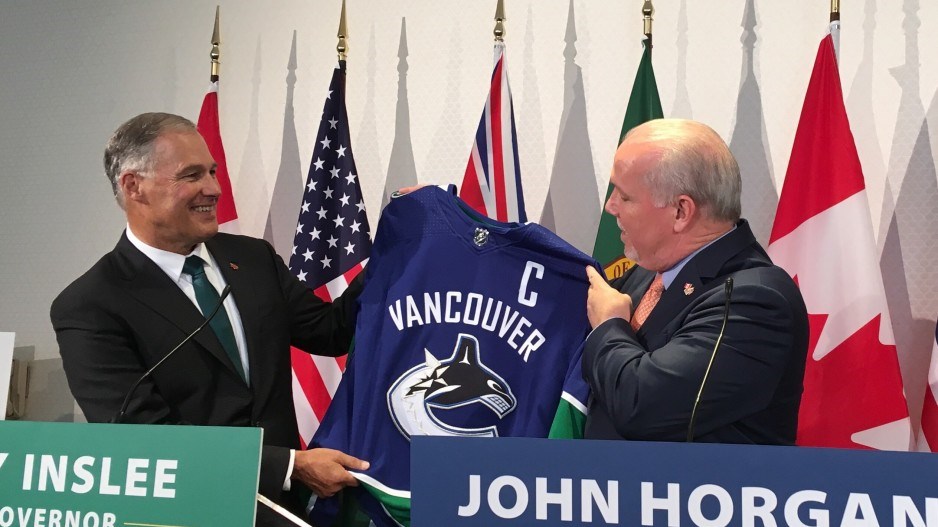Cars may not have to be the default mode of transportation for Vancouver hockey fans hoping to catch an NHL game in Seattle in the coming years.
The B.C. government is putting another $300,000 towards a joint-study with Washington state examining the potential behind a high-speed corridor linking the jurisdictions.
Thursday’s (Feb. 7) funding announcement comes on day one of B.C. Premier John Horgan’s two-day visit to Washington to meet with government and business leaders.
"Improving transportation connectivity is a critically important part of the path forward, and we're going to keep working together to seize opportunities and strengthen the relationship between Washington state and B.C.," Horgan said in a statement.
B.C., Oregon, Microsoft Corp. and Washington state previously contributed a total of US$1.5 million towards the current study.
Including the latest funding commitment, B.C. has put $600,000 towards studying different modes of transportation linking the Cascadia corridor.
One possibility is an ultra-high-speed rail line that uses magnetic levitation technology (maglev).
A 2018 economic analysis from Washington state estimated the corridor could create up to 200,000 jobs, while annual ridership could reach 1.8 million within a few years of operation.
Washington Gov. Jay Inslee announced in December he was earmarking US$3.25 million in his state budget for the development of an ultra-high-speed corridor authority for B.C., Oregon and Washington.
—With a file from Glen Korstrom
Click here for original article.



